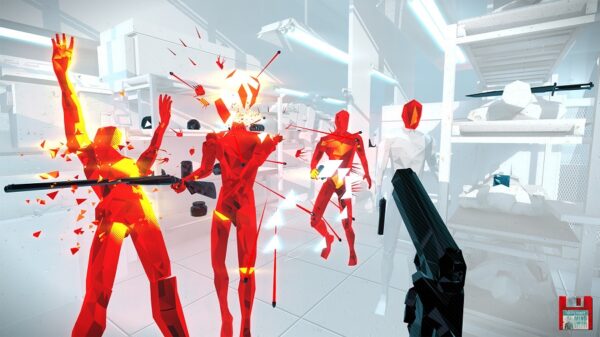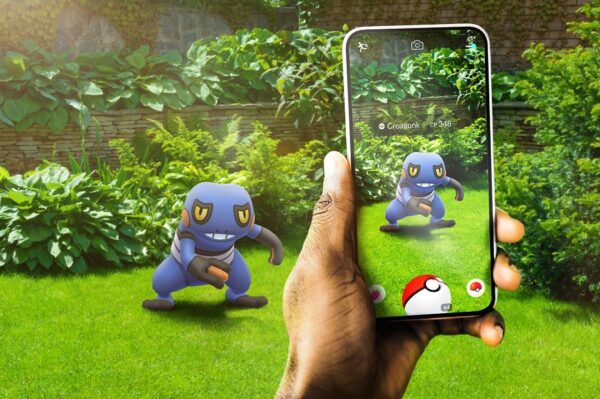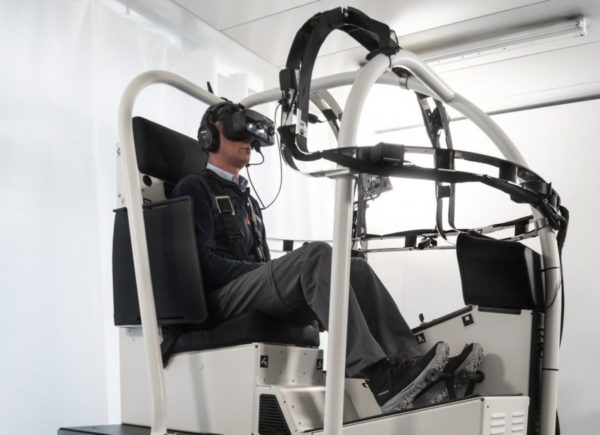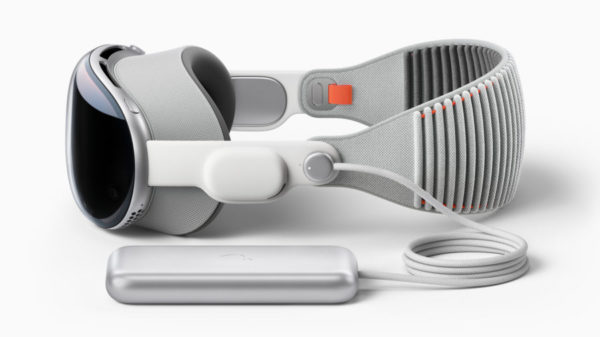This article was originally published by Arprio. Looking to learn more about immersive technology? Arprio helps companies navigate the XR space, launch new products, and grow their market share. Get in touch with Arprio now to learn more about how they can help.

VR, AR, and MR are important terms in immersive technology that describe different kinds of computer-generated experiences, with varying levels of immersion. However, whereas VR, AR and MR describe specific technologies, XR is an umbrella term that refers to all these technologies, and the different kinds of computer-generated experiences they create.
- Virtual Reality (VR): VR immerses the user in a completely digital environment, typically using a headset that replaces the user’s visual and auditory field with a digitally-generated terrain. Users can interact with the virtual environment through specialized controllers, or other input devices, like haptics hardware or hand tracking.
- Augmented Reality (AR): AR involves overlaying digital content onto the real world, typically using a smartphone or AR glasses. AR enhances the user’s view of the real world with additional digital information, such as graphics, text, or video.
- Mixed Reality (MR): Unlike VR, which is a fully-enclosed virtual experience, and AR, which overlays digital objects onto space, MR blends elements of VR with real world space, creating a hybrid between the user’s physical environment and computer-generated information.
- Extended Reality (XR): XR is a broad term that encompasses all forms of immersive technology, including AR, VR, and MR. The aim of XR is a seamless integration between the real and digital worlds, allowing users to interact with both in a natural way.
What is immersive technology?
Immersive technology is a term used to describe technologies that create a sense of immersion or presence, which is the feeling of being fully present in a digital or virtual environment. Immersive technology can include VR, AR, and MR, as well as other technologies that provide an interactive or enhanced experience of reality. Immersive technology is already being used in a wide range of applications, including gaming, healthcare, defense, education, and industrial training.
Let’s take a closer look at each term within immersive technology, and explore the context behind them.
What is Virtual Reality?
Virtual reality (VR) is a technology that immerses users in a completely simulated environment, typically involving the use of a headset or other device that replaces the real world and allows users to interact with a digital environment. Virtual reality headsets have applications from entertainment to enterprise, and are continuing to revolutionize sectors like aerospace, automotive, education, and healthcare.
A recent example of leading VR technology is the Meta Quest Pro, released in October of 2022. Other examples include the HTC Vive XR Elite, which was launched earlier this year. As we mentioned in our post on How to Launch an XR Product, the VR space is advanced, competitive, and often comes with a high barrier to entry in terms of research and development.

What is Augmented Reality?
Augmented reality (AR) is a technology that overlays digital content onto the real world, typically through a smartphone or other mobile device. Unlike VR, augmented reality usually involves a blend of real-world stimuli and digitally-generated spaces and objects. AR has been used for gaming, e-commerce, advertising, and other industrial applications that rely on a mix of reality and digital information (see: Augmented Reality in Architecture, Engineering and Construction).
One of the most well-known examples of an AR app is Pokémon Go, released in 2016 by Niantic. The game was one of the first mainstream examples of augmented reality in action, with players using their smartphone as a viewfinder to catch Pokemon in the real world.

More recently, the Magic Leap 2 (released September 2022) is an example of headworn AR hardware. Marketed as ‘the most immersive enterprise AR device’, the Magic Leap 2 is a headset that overlays digital content onto the real world, allowing users to interact with virtual objects in a real-world environment. As a case in point, Audi recently used Magic Leap 2 to create a dynamic, merged reality interface for drivers, known as the Audi activesphere.

What is Mixed Reality?
Mixed reality (MR) is a type of immersive experience that blends the physical and digital worlds together to create a new type of environment where digital objects can interact with real-world objects, and vice versa. MR allows users to see and interact with virtual objects as if they were part of the real world, creating a seamless blend of the physical and digital realms. Unlike VR, which replaces the real world with a digital space, and AR, which overlays digital objects onto the real world, MR combines elements of both to create a hybrid environment where physical and digital objects coexist.
Importantly, AR and MR are often mistaken for one another at a qualitative level, since they both involve the interaction of digital objects in the real world. However, the distinction lies in how meaningful the user’s environment is as a staging ground for the digital content being projected onto it. In AR, digital objects are simply overlaid onto the user’s surroundings, which remain largely unchanged physically. In MR, however, real space and objects are modified (with the use of green screens, for example) connecting them in a meaningful way to the digital content that is being generated by a headset.
By way of example, mixed reality can be clearly seen in action in Varjo’s Pilot Training, a high-end immersive training solution that can help pilots train in a mixed reality environment. Varjo’s solution combines specific objects in the user’s surrounding environment (in this case, physical flight simulator controllers) with virtually-generated content, to create a more immersive training program for users.

What is Extended Reality?
Extended reality (XR) is an umbrella term that encompasses all immersive technologies, including VR, AR, and MR. XR refers to any experience that extends beyond the physical world through the use of digital technologies. It includes virtual environments that simulate real-world environments, augmented environments that overlay digital content onto the physical world, and mixed environments that blend both virtual and real-world elements. XR technologies are used in a wide range of applications, from entertainment and gaming, to education, healthcare, and industrial training.
What is the difference between augmented reality and virtual reality?
The main difference between AR and VR is how they create and present digital content to users. AR overlays digital information or objects onto the real world, creating a blended experience that combines digital and physical environments. AR can be experienced through mobile devices, such as smartphones and tablets, or specialized AR glasses and headsets. In VR, on the other hand, users are completely immersed in digital three-dimensional space, currently through the use of a headset, which they can interact with as if it were real. Both AR and VR technology have practical uses and entertainment applications. In summary, AR enhances the real world with digital content, while VR creates a completely new and immersive digital world.
The History of Virtual Reality
The history of the extended reality market can be traced back to the 1960s, when the first head-mounted displays (HMDs) were developed. These early HMDs were used for military training and flight simulation. In the 1980s, one of the first commercial VR headsets was released by a company called VPL Research. The headset was called the “DataGlove” and allowed users to interact with a virtual environment using hand gestures. However, VR technology didn’t gain widespread adoption until the 1990s, when companies like Sega and Nintendo started to experiment with VR gaming systems.
In the early 2000s, AR technology began to emerge, with early applications including military training and industrial design. However, it wasn’t until the release of smartphones that AR became more accessible to the general public. The release of Apple’s ARKit in 2017 marked a turning point for AR, making it easier for developers to create AR experiences for mobile devices. Since then, the extended reality market has grown significantly, with Apple officially entering the XR space in June 2023 with the launch of the Apple Vision Pro HMD. The global market size for the XR market is now expected to reach $393 billion by 2025, according to a report by MarketsandMarkets.

Recap
Ultimately, virtual reality, augmented reality, and mixed reality are kinds of computer-generated experiences, with varying degrees of immersion and presence. Whereas VR immerses users in a completely digital environment, and AR overlays digital content onto the real world, MR blends elements of both the virtual and real-world in a seamless way. Finally, XR is a broad term that denotes varying levels of integration between the real and digital worlds, and encompasses VR, AR, and MR technologies more generally.
Looking to learn more about immersive technology? Arprio helps companies navigate the XR space, launch new products, and grow their market share. Get in touch now to learn more.
About the author
Oliver Sprigg
Oliver is a seasoned brand strategist and content writer. He has designed brand identities for FinServ, telecoms, and marketing companies. Oliver holds an MSc in Psychology and a BA in English Literature and American Studies.





